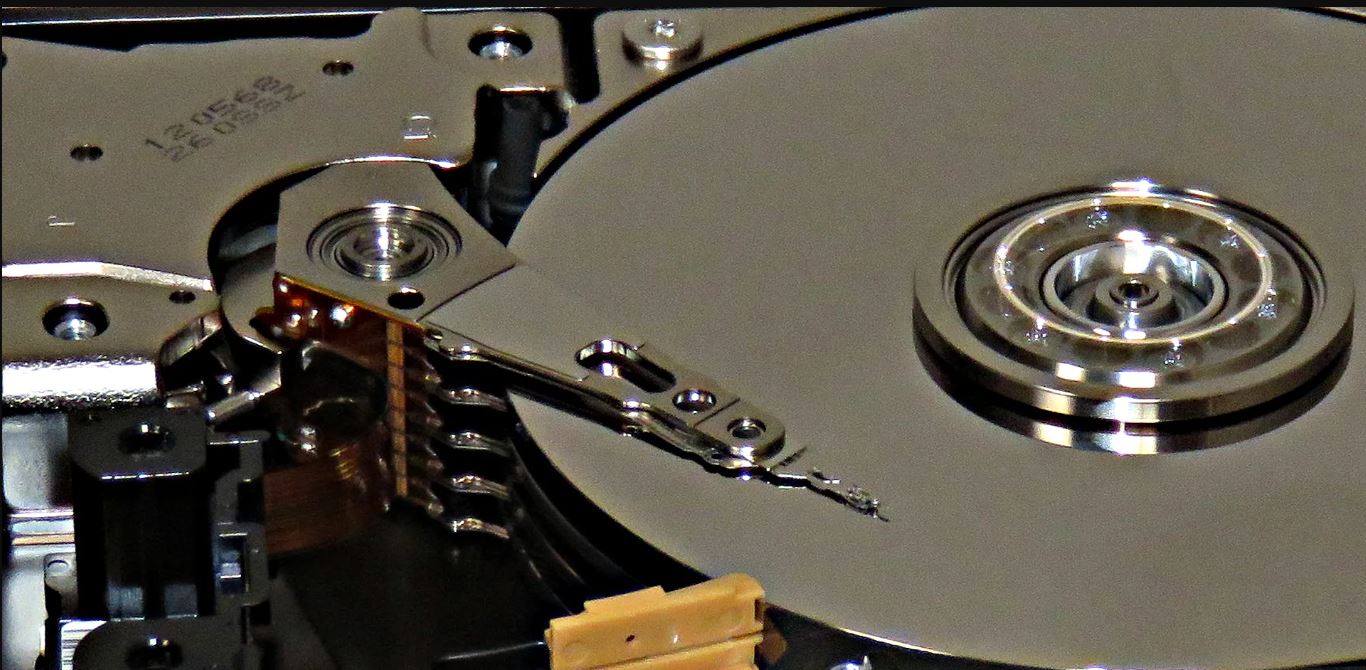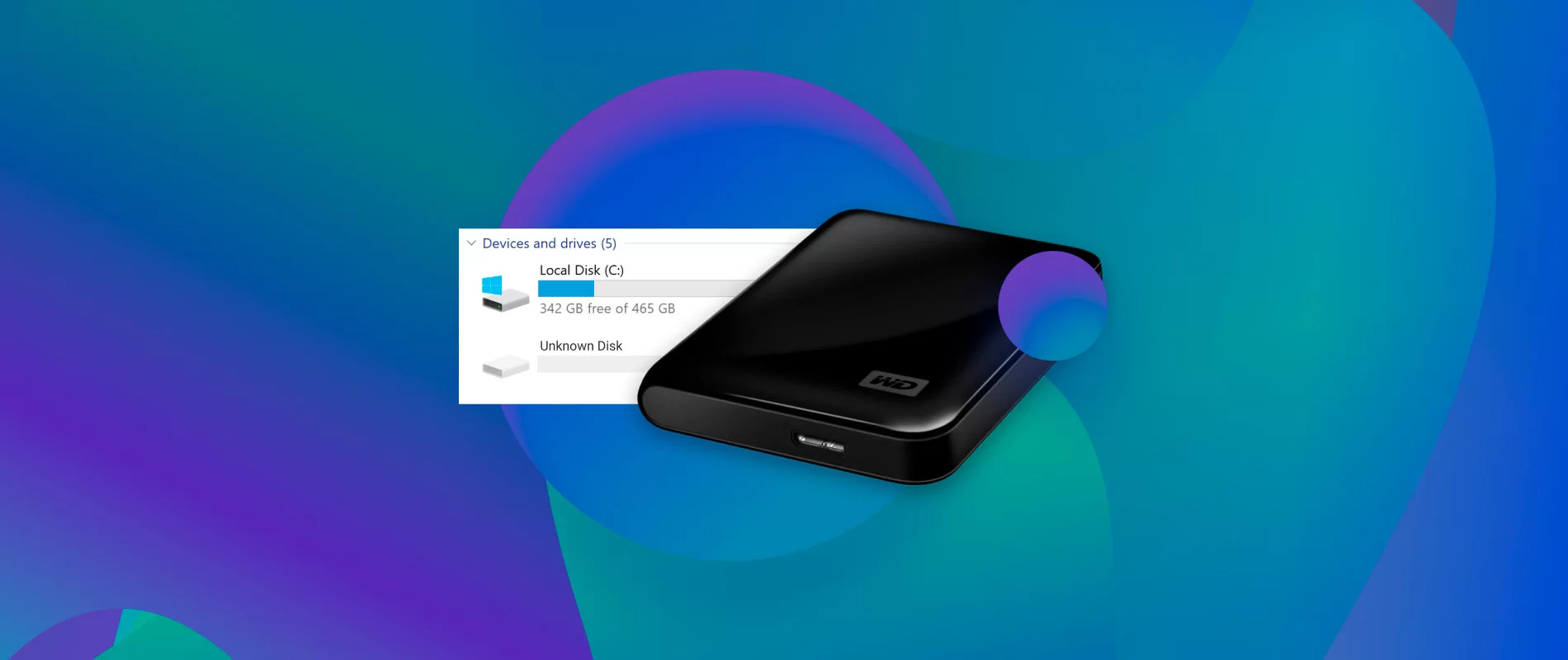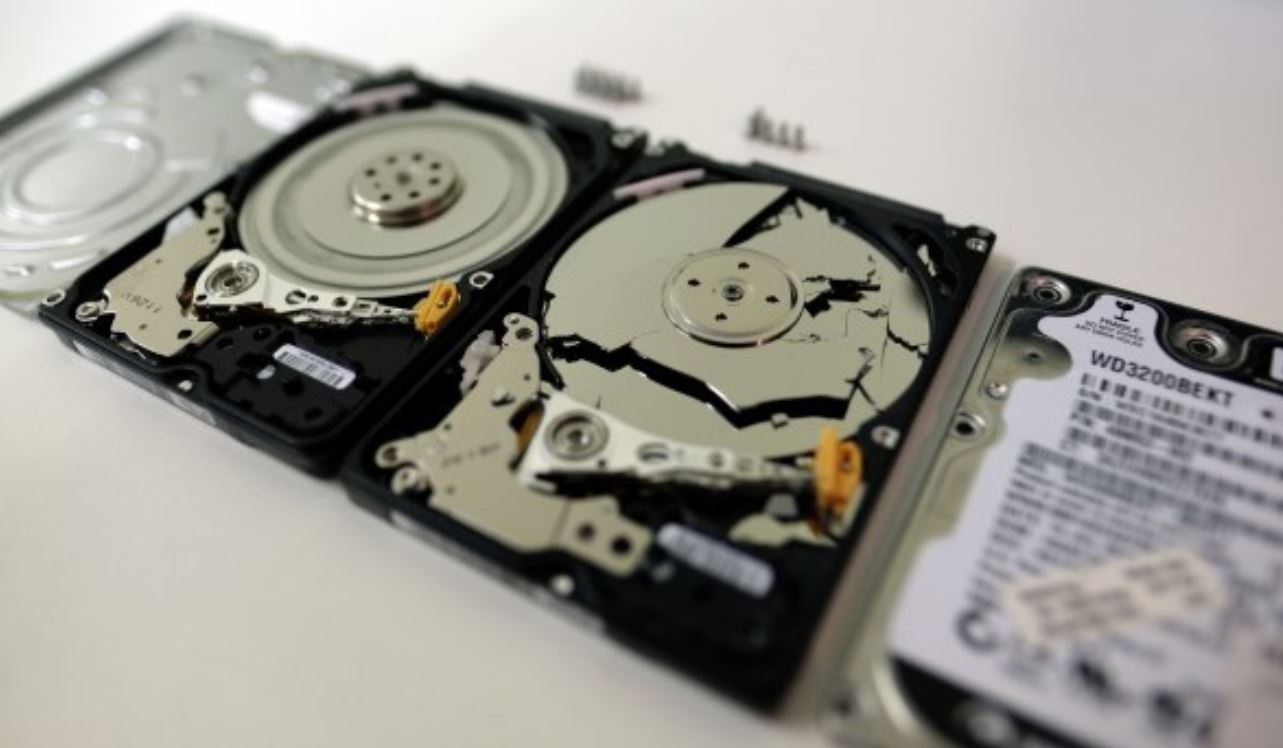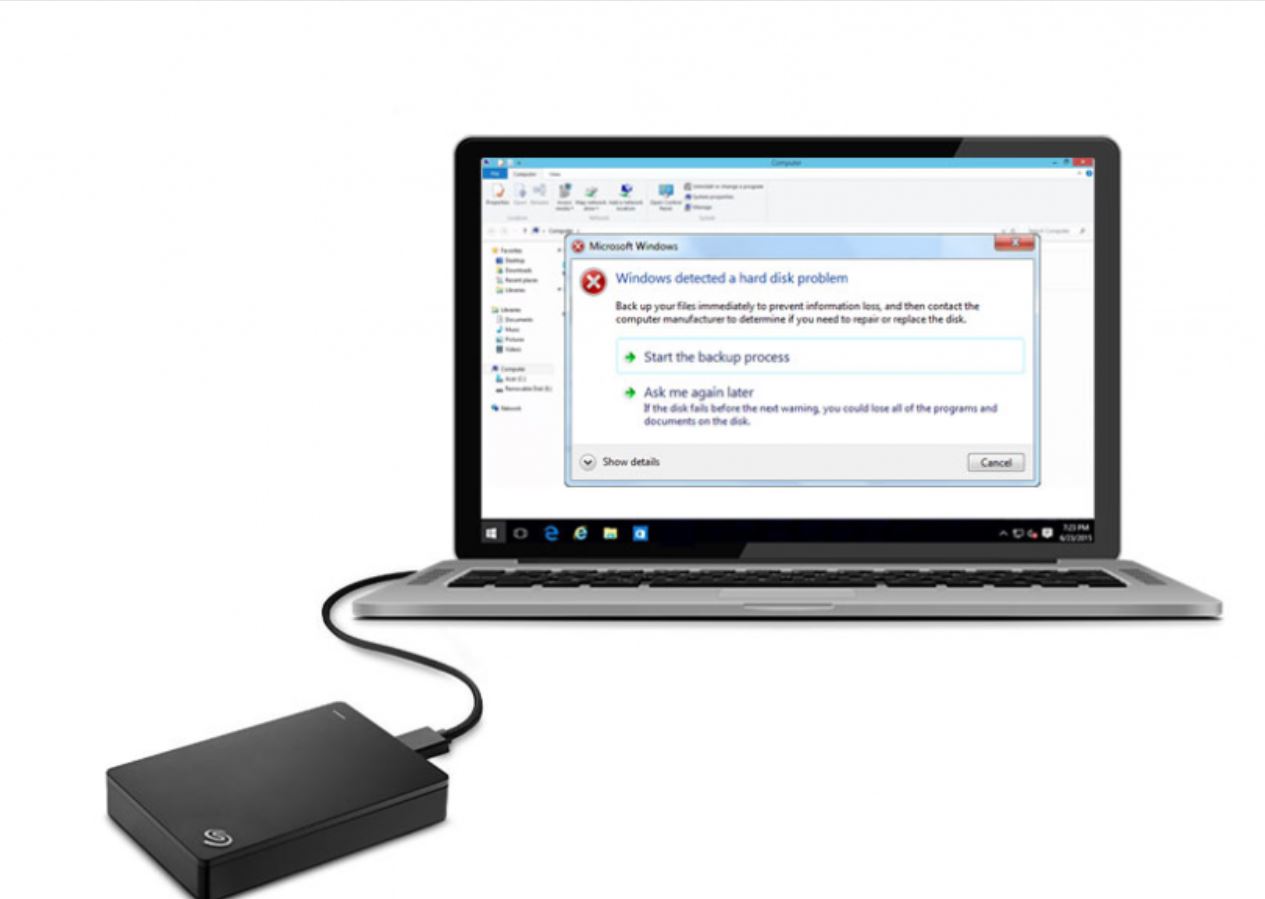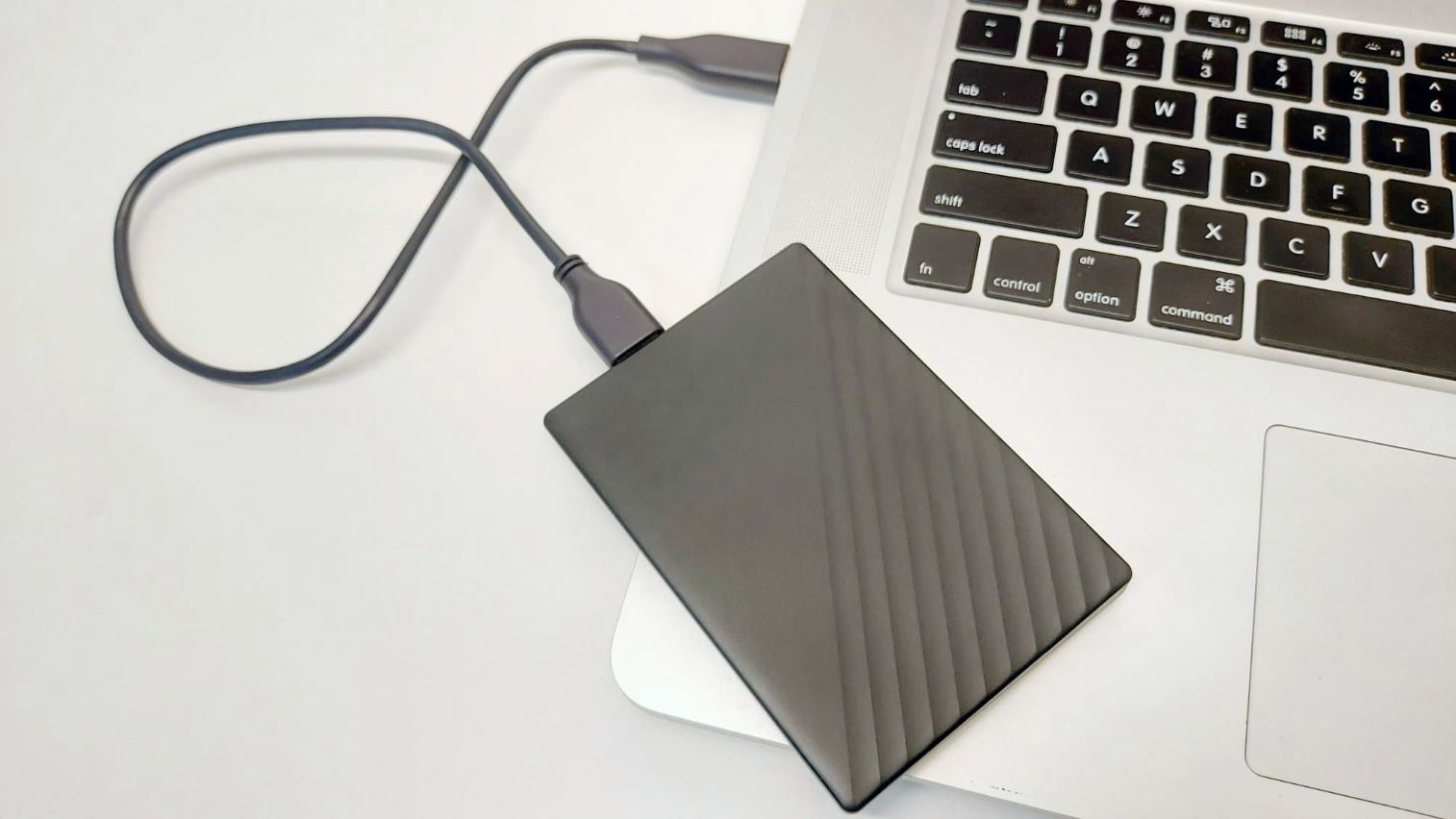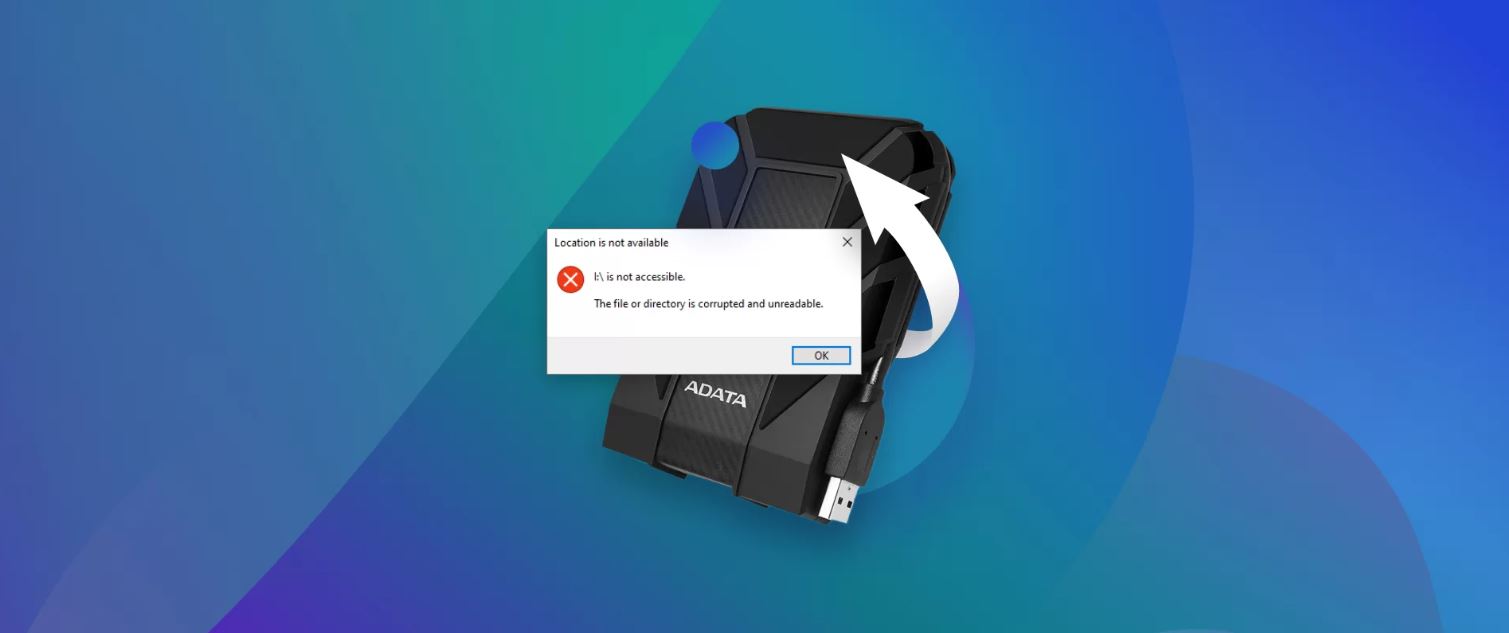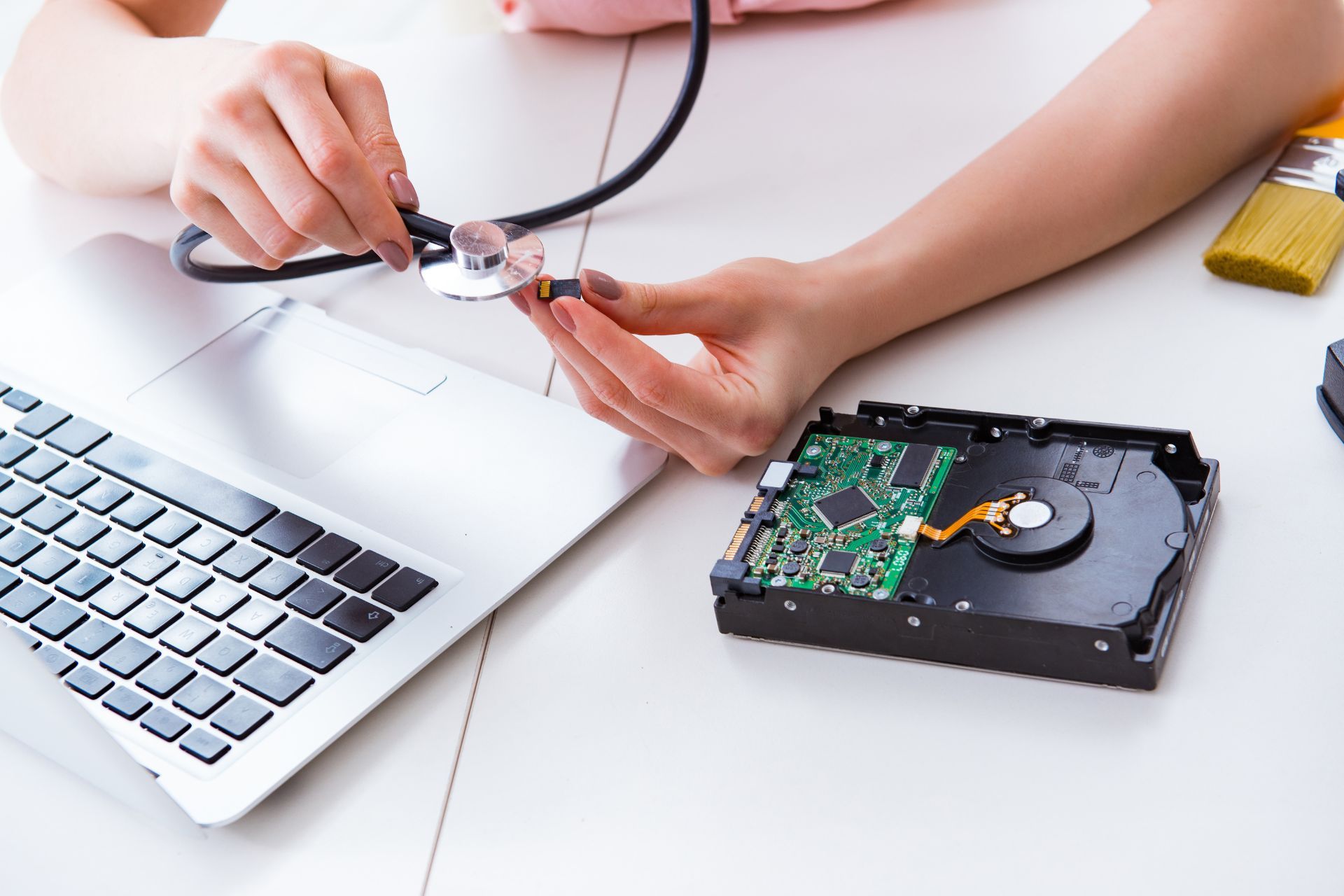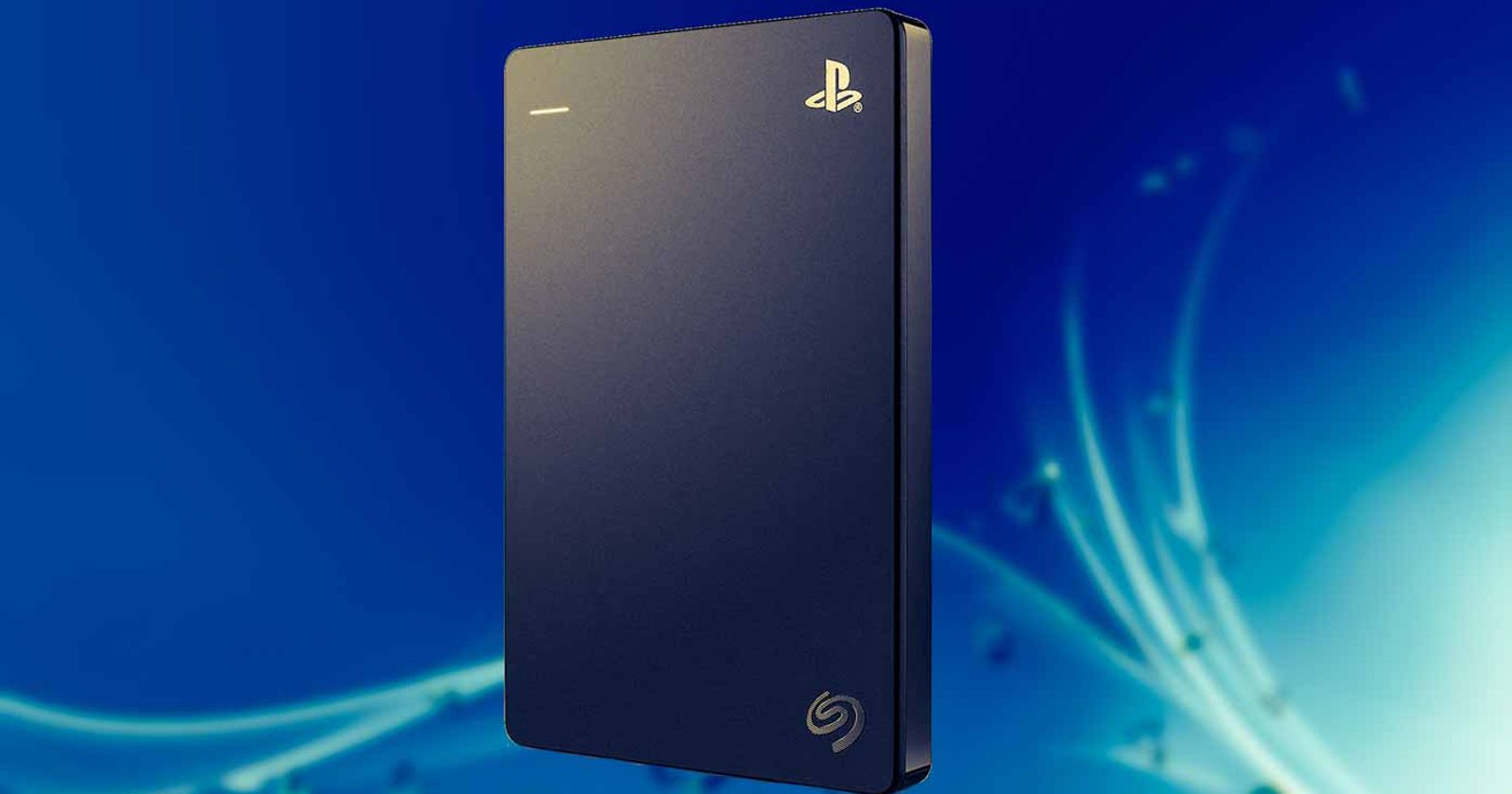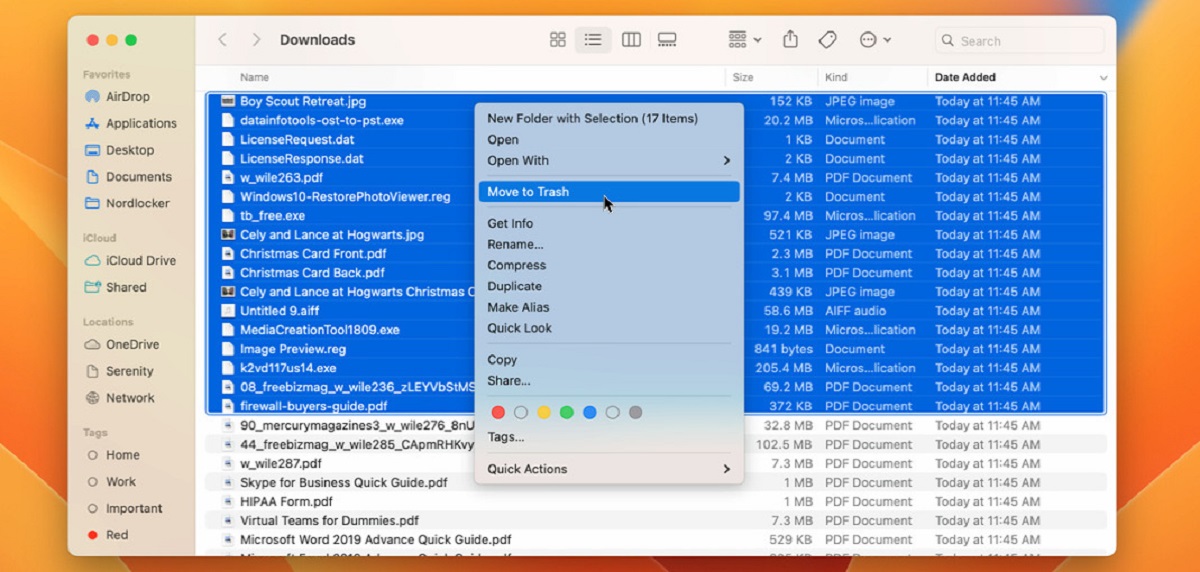Introduction
Welcome to our article on why your external hard drive may be making a clicking noise. External hard drives are a popular storage solution for individuals and businesses alike, providing extra space to store important files and data. However, encountering a clicking noise can be a cause for concern. In this article, we will explore the reasons behind this clicking sound and discuss the potential consequences it may have on your data.
Whether you have recently noticed the clicking noise or have been experiencing it for some time, it is essential to address the issue promptly to prevent further damage to your external hard drive and potential data loss. By understanding the causes of this clicking sound and implementing the appropriate troubleshooting solutions, you can take the necessary steps to resolve the problem and ensure the safety of your files.
We will delve into the various reasons why your external hard drive may be making a clicking noise, such as physical damage, firmware issues, corrupted file systems, and power supply problems. Each of these factors can contribute to the clicking sound and may require different remedies. Furthermore, we will discuss the potential consequences of a clicking hard drive, including data loss, inaccessibility of files, and ultimately, hard drive failure.
To help you troubleshoot the issue, we will provide several solutions that you can try on your own. These solutions include checking the power connection, switching USB ports or cables, running disk check utilities, and contacting the manufacturer or a professional data recovery service if needed. By following these troubleshooting steps, you can attempt to resolve the clicking noise and restore the functionality of your external hard drive.
It is important to note that while some clicking noises may be indicative of minor issues that can be easily resolved, others may signify severe damage or mechanical failures within the hard drive. In such cases, seeking professional assistance is highly recommended to ensure the best chances of data recovery and prevent further damage to your valuable files.
Now that you understand the importance of addressing the clicking noise in your external hard drive, let’s delve into the specific causes and potential solutions for this issue. By taking immediate action, you can safeguard your data and potentially save your external hard drive from further damage. Let’s get started!
Understanding the Clicking Noise
If you’ve noticed a clicking noise coming from your external hard drive, it’s crucial to understand what this sound might indicate. While external hard drives are generally designed to operate silently, a clicking noise could be a sign of an underlying issue that needs attention.
The clicking noise in an external hard drive is typically caused by the read/write head, which is responsible for reading and writing data from the drive’s platters. Under normal circumstances, this head moves smoothly and silently. However, when it encounters a problem or becomes misaligned, it can start to click or make repetitive clicking sounds.
It’s important to note that not all clicking noises are the same, and their intensity can vary. Sometimes the clicks might be intermittent, while other times they can be rapid and continuous. The volume of the clicking sound can also range from barely audible to quite noticeable.
Several factors can contribute to the clicking noise in an external hard drive. Physical damage, such as a dropped hard drive or a shock, can cause the read/write head to become misaligned or even make contact with the platters. This leads to the clicking sound as the head tries to read or write data in an abnormal manner.
Firmware issues can also be a culprit. The firmware in the hard drive controls its operations and ensures proper communication between the hardware components. If the firmware becomes corrupted or outdated, it can cause the read/write head to malfunction and produce clicking noises.
Another common cause of clicking noises is a corrupted file system. The file system is responsible for organizing and managing files on the hard drive. When the file system becomes corrupted or damaged, it can result in read/write errors, causing the read/write head to click as it tries to access or save data.
Lastly, power supply problems can contribute to clicking noises. Insufficient or unstable power supply to the hard drive can disrupt its normal operation and cause the read/write head to behave erratically, resulting in a clicking sound.
Understanding these potential causes of clicking noises in external hard drives is the first step in diagnosing and resolving the issue. In the following sections, we will explore the consequences of a clicking hard drive and provide troubleshooting solutions to help you address the problem effectively.
Causes of Clicking Noise in External Hard Drives
A clicking noise in an external hard drive can be alarming, but it’s important to understand the underlying causes to identify the best course of action. Let’s explore the primary factors that can contribute to this issue:
- Physical damage: External hard drives are prone to physical damage, especially when they are transported or mishandled. Dropping the hard drive or subjecting it to a significant impact can result in misalignment of the read/write head or damage to other internal components. This misalignment or damage can lead to the clicking sound as the head tries to function improperly.
- Firmware issues: The firmware in an external hard drive is responsible for controlling its operations and ensuring smooth communication between the hardware components. However, if the firmware becomes corrupted or outdated, it can cause the read/write head to malfunction and produce clicking noises as it struggles to read or write data correctly.
- Corrupted file system: The file system of a hard drive organizes and manages files, acting as a bridge between the user and the storage device. When the file system becomes corrupted or damaged, it can lead to read/write errors. In such cases, the read/write head may click as it attempts to access or save data due to the inconsistencies in the file system.
- Power supply problems: Insufficient or unstable power supply to the external hard drive can disrupt its normal functioning. Inadequate power supply can cause the read/write head to behave erratically, leading to a clicking sound. Power fluctuations or using an incompatible power adapter can contribute to this issue.
Identifying the specific cause of the clicking noise in your external hard drive is crucial in determining the appropriate troubleshooting steps. While physical damage and firmware issues may require professional intervention, you can attempt to address corrupted file systems or power supply problems using the troubleshooting solutions we will discuss later in this article.
It’s essential to note that attempting to fix physical damage or firmware issues without proper knowledge or equipment can potentially cause more harm to the external hard drive. In such cases, it is best to seek assistance from a professional data recovery service or contact the manufacturer for guidance.
Understanding the causes behind the clicking noise is just the first step in resolving the issue. In the following sections, we will discuss the potential consequences of ignoring a clicking hard drive and provide troubleshooting solutions to help you mitigate the problem effectively and minimize data loss.
Physical Damage
Physical damage is one of the primary causes of a clicking noise in an external hard drive. Dropping the hard drive, mishandling it, or subjecting it to a significant impact can result in various types of physical damage that can affect the functionality of the drive.
When an external hard drive experiences physical damage, it can lead to misalignment of the read/write head or even direct contact between the head and the platters, which are responsible for storing the data. This misalignment or contact can cause the read/write head to click as it struggles to read or write data correctly.
Signs of physical damage may include visible scratches or dents on the external casing of the hard drive, an abnormal clicking sound, or the drive not being recognized by the computer. If you suspect physical damage to your external hard drive, it is crucial to handle it with care and avoid further mishandling that could worsen the situation.
Attempting to repair physical damage on your own without the necessary expertise or equipment can lead to further damage and potentially render the drive completely inaccessible. In such cases, it is advisable to consult a professional data recovery service or contact the manufacturer for assistance.
Professional data recovery specialists have the expertise and tools required to analyze the extent of the physical damage and assess the possibility of data recovery. They can disassemble the hard drive in a controlled environment, assess the damage, and perform repairs or data extraction using specialized techniques.
It’s essential to keep in mind that physical damage is a serious issue and can significantly impact the chances of data recovery. Prompt action and professional assistance are vital to maximize the chances of retrieving your valuable data.
If you suspect physical damage to your external hard drive, it is advisable to:
- Stop using the drive immediately to prevent further damage.
- Handle the drive with care to avoid exacerbating the issue.
- Consult a professional data recovery service for expert analysis and advice on the best course of action.
Remember, attempting to fix physical damage on your own without the required expertise and tools can lead to irreversible damage and potential data loss. Seek professional assistance to increase the chances of recovering your important files and minimize the risk of permanent damage to your external hard drive.
Firmware Issues
Firmware serves as the software interface between the hardware components of an external hard drive and the computer. It plays a crucial role in ensuring the proper functioning, communication, and coordination of these components. Issues with the firmware can lead to clicking noises and other malfunctions in the external hard drive.
If the firmware becomes corrupted or outdated, it can cause the read/write head to malfunction and produce clicking sounds. Corrupted firmware can result from various factors, including software bugs, incompatible system updates, improper firmware installations, or power failures during firmware updates.
One of the signs of firmware issues is the clicking noise, often accompanied by the drive being inaccessible or not recognized by the computer. In some cases, the external hard drive may appear in the device list, but the computer cannot read or write data to it.
When dealing with firmware issues, it is crucial to handle the situation carefully to prevent further complications. Here are a few troubleshooting steps you can take to address firmware-related clicking noises:
- Check for firmware updates: Visit the manufacturer’s website and check if there are any firmware updates available for your specific external hard drive model. Download and install the latest firmware, following the provided instructions carefully. Updating the firmware can often resolve issues related to compatibility and software bugs.
- Perform a firmware reset: Some external hard drives have a built-in firmware reset option. Refer to the manufacturer’s documentation or website to find instructions on how to perform a firmware reset for your particular model. This can help restore the firmware to its default settings and resolve any corruption issues.
- Seek professional assistance: If the above steps do not resolve the issue, it is advisable to contact the manufacturer’s support team or a professional data recovery service that specializes in firmware-related problems. They have the expertise and tools necessary to diagnose and repair firmware issues effectively.
Note that attempting to fix firmware issues without proper knowledge or expertise can potentially worsen the situation and lead to permanent data loss. Therefore, it is crucial to consult professionals if you are unsure or if the troubleshooting steps do not yield satisfactory results.
By addressing firmware issues promptly and correctly, you can potentially resolve clicking noises caused by firmware malfunctions and restore the functionality of your external hard drive.
Corrupted File System
A corrupted file system is a common cause of clicking noises in an external hard drive. The file system acts as the bridge between the user and the storage device, organizing and managing files on the hard drive. When the file system becomes corrupted or damaged, it can lead to read/write errors and subsequent clicking sounds.
Several factors can contribute to a corrupted file system. Power failures, improper ejection of the external hard drive, software bugs, or malware infections can all result in file system corruption. Additionally, physical damage or firmware issues can also cause data inconsistencies that lead to file system errors.
Signs of a corrupted file system may include the clicking noise, the drive not being recognized by the computer, or files and folders becoming inaccessible or displaying errors. If you suspect a corrupted file system as the cause of the clicking noise in your external hard drive, here are some troubleshooting steps you can take:
- Check disk for errors: Most operating systems provide built-in disk checking utilities that scan and repair errors in the file system. On Windows, you can use the “chkdsk” command, while macOS has the “Disk Utility” application. Run a disk check on the affected drive to identify and fix any file system errors.
- Use data recovery software: If the disk check utility is unable to repair the corrupted file system, you can try using data recovery software to retrieve your files. These programs can scan your external hard drive, detect recoverable data, and allow you to copy it to another storage device. However, it’s important to note that data recovery software may not be able to fix the underlying file system issue.
- Format the drive: If all else fails and you have already backed up your important data, you can consider formatting the external hard drive. Formatting erases all data on the drive and reinstalls a fresh file system. This can fix the corrupted file system but will result in complete data loss. Ensure you have a backup of your files before proceeding with this step.
- Seek professional assistance: If the troubleshooting steps mentioned above do not resolve the clicking noise or if your files are critical and cannot be risked, it is recommended to seek professional assistance from a data recovery service. They have advanced tools and techniques to handle corrupted file systems and may be able to recover your important data without causing further damage.
It’s important to handle a corrupted file system with caution, as incorrect attempts to fix it can lead to permanent data loss. If you are unsure or uncomfortable with the troubleshooting steps, seeking professional help is the best course of action to maximize the chances of data recovery.
By addressing the issue of a corrupted file system promptly and appropriately, you can potentially resolve clicking noises in your external hard drive and restore access to your important files.
Power Supply Problems
Power supply problems can also contribute to clicking noises in an external hard drive. Insufficient or unstable power supply to the drive can disrupt its normal operation, causing the read/write head to behave erratically and produce clicking sounds.
There are several reasons why power supply problems may occur. Using an incompatible power adapter or cable, power fluctuations in the electrical outlet, or a faulty power source can all result in inadequate power being supplied to the external hard drive.
When dealing with power supply problems, it’s important to identify and address the root cause to resolve the clicking noise. Here are some steps you can take to troubleshoot power supply issues:
- Check the power connection: Ensure that the power cable is securely connected to both the external hard drive and the power source. Wiggle the cable gently to confirm that there are no loose connections. Also, try plugging the hard drive into a different electrical outlet to eliminate potential issues with the power source.
- Use a different power adapter or cable: In some cases, using an incompatible power adapter or cable can cause power supply problems. If you have access to a different power adapter or cable that is compatible with your external hard drive, try swapping them out to see if it resolves the clicking noise.
- Use a powered USB hub: If you are connecting the external hard drive to your computer via USB, using a powered USB hub can help provide a more stable power supply. A powered USB hub has its own power source and can supply sufficient power to the connected devices, reducing the chances of power-related issues.
- Seek professional assistance: If the clicking noise persists despite checking the power connection and trying different power sources, it is advisable to seek professional assistance. A data recovery service or the manufacturer’s support team can provide further guidance and help diagnose any underlying power supply problems.
It’s important to note that power supply problems can cause severe damage to the external hard drive and potentially lead to data loss. Therefore, it is crucial to address power-related issues promptly to prevent further damage.
By ensuring a stable and adequate power supply to your external hard drive, you can reduce the chances of clicking noises and help maintain the optimal functioning of the drive.
Consequences of a Clicking Hard Drive
Experiencing a clicking noise in your external hard drive can have several significant consequences. Ignoring or delaying addressing the issue can lead to further complications, including the following:
1. Data Loss: A clicking hard drive indicates that there is a problem with the read/write mechanism, which could result in data loss. If the read/write head is unable to function correctly, it may not be able to access or write data properly onto the platters, leading to potential loss or corruption of files.
2. Inaccessibility of Files: As the clicking becomes more severe, it can render the external hard drive completely inaccessible. This means you won’t be able to retrieve any of your files or access the data stored on the drive, resulting in a significant loss of valuable information.
3. Hard Drive Failure: A clicking noise often indicates that there are underlying hardware issues within the external hard drive. If these issues are not addressed promptly, they can worsen and potentially lead to complete hard drive failure. This means the drive will no longer function and may require expensive professional data recovery services to retrieve any remaining data.
It’s crucial to remember that a hard drive making a clicking noise is a warning sign of potential problems. If you continue to use the drive, the clicking sound could worsen, causing more damage and reducing the chances of recovering your data successfully.
If you are experiencing a clicking hard drive, it is recommended to follow the troubleshooting steps provided in this article or seek professional assistance as soon as possible. Data recovery professionals have the expertise and specialized tools to diagnose and repair these issues while minimizing the risk of further data loss.
Remember, the consequences of a clicking hard drive can be severe, and immediate action is necessary to prevent permanent data loss. By addressing the issue promptly, you can improve the chances of recovering your files and preserving the functionality of your external hard drive.
Data Loss
One of the most significant consequences of a clicking hard drive is the risk of data loss. When the read/write mechanism in the external hard drive is malfunctioning or unable to operate properly, it can result in the loss or corruption of files.
A clicking hard drive signifies that the read/write head is encountering difficulties in reading or writing data onto the platters. This means that the information stored on the drive may not be accessible or could be partially overwritten, leading to permanent data loss.
The severity of data loss can vary depending on the extent of the clicking issue and the specific files and data affected. It could range from the loss of a few files to the entire contents of the external hard drive. Additionally, data loss can occur in both personal and professional settings, impacting personal photos, videos, documents, or important business data.
It’s important to understand that the longer you continue to use a clicking hard drive, the greater the chances of additional data loss. Each time the read/write head attempts to function, it can cause further damage to the drive and potentially overwrite existing data.
To mitigate the risk of data loss, it is crucial to stop using the clicking hard drive immediately and follow appropriate data recovery procedures. Avoid attempting DIY data recovery methods unless you have the necessary expertise and tools, as improper techniques can lead to further damage and reduce the likelihood of successful recovery.
Instead, consider consulting professional data recovery services who specialize in retrieving data from faulty hard drives. They have the necessary skills and experience to safely extract data from a clicking hard drive using specialized equipment and techniques. These professionals can evaluate the extent of the damage, develop a data recovery plan, and maximize the chances of retrieving your valuable files.
Prevention is key when it comes to data loss. Regularly backing up your important files to an alternate storage device or cloud service can help safeguard your data in case of hard drive failures or other unforeseen issues.
Remember, a clicking hard drive should not be ignored, as it poses a significant risk of data loss. By taking immediate action and seeking professional assistance, you can increase the chances of successful data recovery and minimize the impact of data loss on your personal or professional life.
Inaccessibility of Files
Another consequence of a clicking hard drive is the potential for complete inaccessibility of your files. As the clicking becomes more pronounced, the external hard drive may become unresponsive, making it impossible to retrieve any data stored on it.
The clicking noise typically indicates a mechanical problem within the hard drive, such as a malfunctioning read/write head or damaged platters. When these components are unable to function properly, it can result in the drive failing to spin up, causing the drive to become unresponsive or unrecognized by the computer.
If your external hard drive is inaccessible due to clicking noises, it is important not to attempt to force access or use unreliable software to recover the data. These actions can worsen the situation and potentially lead to permanent data loss.
Professional data recovery services can assist in retrieving data from inaccessible hard drives. They have the necessary expertise, specialized tools, and cleanroom facilities to diagnose and repair mechanical issues, allowing them to retrieve your valuable files in a safe and controlled environment.
It’s important to note that the extent of inaccessibility can vary depending on the severity of the clicking issue and the specific components affected. In some cases, it may still be possible to recover a portion or all of the data stored on the drive. However, the longer you continue to use a clicking hard drive, the greater the risk of further damage and diminished chances of successful data recovery.
To minimize the potential impact of inaccessibility and increase the chances of data recovery, it is crucial to immediately stop using the clicking hard drive and seek professional assistance. Timing is critical in data recovery, and the sooner you involve experts, the better the chances of retrieving your files.
Remember to maintain regular backups of your important files on alternate storage devices or cloud services. This practice helps ensure that even if your external hard drive becomes completely inaccessible, you still have copies of your data readily available.
If you encounter an external hard drive making clicking noises, unplug it and avoid further use until you consult professionals. By taking prompt action and relying on reputable data recovery services, you can increase the likelihood of accessing and recovering your important files despite the clicking issues.
Hard Drive Failure
A clicking hard drive is a clear indication that there are underlying issues with the internal components of the drive. If left unaddressed, these problems can eventually lead to complete hard drive failure. Hard drive failure refers to the point at which the drive no longer functions and becomes inoperable.
The clicking noise in a hard drive is often a symptom of mechanical failures, such as a malfunctioning read/write head, damaged platters, or spindle motor issues. These failures can result from physical damage, firmware problems, corrupted file systems, or power supply issues.
As the hard drive encounters these mechanical failures, the clicking sound may intensify and become more frequent. Eventually, the drive may stop spinning altogether, preventing any access to the stored data.
Hard drive failure can have severe consequences, including permanent data loss. When a hard drive fails, it becomes extremely challenging to retrieve any data stored on it without professional intervention. The mechanical components of the drive may need to be repaired or replaced, requiring specialized tools and expertise.
To minimize the risk of hard drive failure, it is crucial to take immediate action when you notice clicking noises. Continuing to use a failing hard drive can exacerbate the issue and reduce the likelihood of successful data recovery.
Professional data recovery services specialize in recovering data from failed hard drives. These services have the expertise and facilities to diagnose the root causes of the failure, repair the mechanical components, and retrieve the data on the drive.
It is important to note that hard drive failure can be costly to resolve. The complexity of the issue and the extent of the damage can impact the success of data recovery and the associated costs involved. Therefore, it is crucial to weigh the value of the data stored on the drive against the potential costs of data recovery services.
To mitigate the risk of hard drive failure and the subsequent loss of data, it is vital to establish regular backup procedures. By regularly backing up your data to alternate storage devices or cloud services, you can ensure that even if your hard drive fails, you have copies of your important files readily accessible.
If you suspect that your hard drive is on the brink of failure due to clicking noises, it is best to consult data recovery professionals as soon as possible. They can evaluate the extent of the damage, provide an assessment of the recovery potential, and advise on the best course of action to safeguard your data.
Troubleshooting Solutions
When faced with a clicking hard drive, there are several troubleshooting solutions you can try to address the issue. It is important to note that these solutions are intended for mild cases where the hard drive is still responsive and the clicking noise is not too severe. If the clicking is persistent or accompanied by other issues like data inaccessibility, it is recommended to seek professional assistance.
Here are some troubleshooting steps you can take to potentially resolve the clicking noise and restore the functionality of your external hard drive:
- Check power connection: Ensure that the power cable is securely connected to both the external hard drive and the power source. Try using a different power outlet or try a different power cable to rule out any power supply issues.
- Switch USB ports or cables: Sometimes, USB ports or cables can be the source of the problem. Connect the external hard drive to a different USB port on your computer or try using a different USB cable to see if the clicking noise persists.
- Run disk check utility: Most operating systems have built-in disk check utilities that can scan and repair errors on the file system. On Windows, you can use the “chkdsk” command, while macOS has the “Disk Utility” application. Run a disk check on the affected drive to identify and fix any file system errors.
- Contact manufacturer or professional data recovery services: If the clicking noise continues or if you suspect major hardware issues, it is advisable to contact the manufacturer’s customer support for guidance. They can provide specific troubleshooting steps or refer you to professional data recovery services if necessary.
It is important to proceed with caution and refrain from attempting any advanced troubleshooting or opening the hard drive yourself, as this can potentially cause further damage and reduce the chances of successful data recovery.
Remember, troubleshooting solutions are only effective for certain cases, and severe clicking noise or data inaccessibility may require professional assistance. In such situations, data recovery specialists can diagnose the problem accurately, perform necessary repairs, and recover your data using specialized techniques.
To avoid future issues, it is crucial to maintain regular backups of your important files on alternate storage devices or in the cloud. This practice ensures that your data remains safe even if the external hard drive encounters problems.
If the troubleshooting steps mentioned above do not resolve the clicking noise or if you encounter other issues, it is advisable to consult professional data recovery services to maximize the chances of data recovery and minimize further damage to your external hard drive.
Check Power Connection
One of the troubleshooting solutions for a clicking hard drive is to check the power connection. A loose or faulty power connection can cause inadequate power supply to the external hard drive, resulting in clicking noises or other malfunctions. Before proceeding with other troubleshooting steps, it’s crucial to ensure that the power connection is secure and functioning correctly.
Here are some steps to help you check the power connection of your external hard drive:
- Verify the power cable: Ensure that the power cable is securely connected to both the external hard drive and the power source. Gently wiggle the cable to check for any loose connections. If you are using an AC adapter, make sure it is plugged into a functional power outlet.
- Try a different power outlet: Sometimes, the issue may lie with the power outlet itself. Plug your external hard drive into a different power outlet to rule out any problems with the current outlet. Be sure to avoid using power strips or extension cords, as they may not provide a stable power supply.
- Use a different power cable or adapter: If you have access to another power cable or adapter that is compatible with your external hard drive, try using it to see if the clicking noise persists. A faulty cable or adapter could be the culprit, and switching to a different one can help determine if that is the case.
By verifying and ensuring a proper power connection, you can eliminate potential power-related issues that may be causing the clicking noise in your external hard drive.
It is essential to handle the power connection with care and avoid applying excessive force when plugging or unplugging the cables. Rough handling can lead to damage to the power connector or other components of the external hard drive.
If the clicking noise persists after checking the power connection, it is recommended to move on to the next troubleshooting solutions or seek professional assistance. Persistent clicking could be an indication of other underlying issues, which may require advanced troubleshooting or professional intervention for resolution.
Remember, troubleshooting the power connection is just the first step. If you continue to experience clicking noises or encounter other problems, it is crucial to proceed with caution and consider seeking expert help to avoid further damage and increase the chances of successful data recovery.
Switch USB Ports or Cables
If you’re experiencing a clicking noise in your external hard drive, one potential cause could be a faulty USB port or cable. Switching to a different USB port or cable can help determine if the issue lies in the connection rather than the hard drive itself. By following these troubleshooting steps, you may be able to resolve the clicking noise without further intervention.
Here are some steps to switch USB ports or cables to troubleshoot the clicking noise:
- Try a different USB port: Disconnect the USB cable from the current port on your computer and plug it into a different port. Ensure that the port is functional and compatible with your external hard drive. Sometimes, a faulty USB port can cause instability in the connection, resulting in clicking noises or other issues.
- Use a different USB cable: If switching USB ports doesn’t resolve the clicking noise, try using a different USB cable. Some cable connections may be loose or damaged, causing intermittent connectivity problems and resulting in clicking sounds from the hard drive. Use a known working USB cable that is compatible with your external hard drive.
By switching USB ports or cables, you can rule out issues related to a faulty connection, ensuring that the clicking noise is not caused by a poor or unstable USB connection.
It’s important to handle the USB cable and ports with care, making sure not to force or damage them during the switching process. Avoid excessive bending or twisting of the cable and ensure a secure and snug connection.
If the clicking noise persists after switching USB ports or using a different USB cable, it is advisable to continue troubleshooting with the next steps or consider seeking expert assistance. The clicking noise could be an indication of other underlying issues, which may require advanced troubleshooting or professional intervention for resolution.
Remember, troubleshooting the USB ports and cables is just one step in the process of resolving the clicking noise. If you continue to encounter clicking noises or face other problems, it’s essential to proceed with caution and consider consulting professionals to prevent further damage and enhance the chances of successful data recovery.
Run Disk Check Utility
Running a disk check utility is a valuable troubleshooting step to address potential clicking noises in your external hard drive. Disk check utilities are built-in tools in most operating systems that can scan and repair errors in the file system, helping to resolve issues that may be causing the clicking noise.
Here are the steps to run a disk check utility on your external hard drive:
- Windows:
- Open the Command Prompt by searching for it in the Start menu or by pressing Windows Key + R and then typing “cmd” and hitting Enter.
- In the Command Prompt window, type “chkdsk [drive letter] /f” and hit Enter.
- Replace “[drive letter]” with the letter assigned to your external hard drive (e.g., “chkdsk D: /f”).
- The utility will now scan the drive for errors and attempt to repair any issues it finds. Follow any on-screen prompts if necessary.
- macOS:
- Open the “Disk Utility” application, which can be found in the Utilities folder of the Applications folder.
- Select your external hard drive from the list of available drives.
- Click on the “First Aid” tab and then click on the “Run” or “Repair Disk” button.
- The utility will now scan the drive for errors and attempt to repair any issues it finds. Follow any on-screen prompts if necessary.
Running a disk check utility can help identify and fix file system errors that may be contributing to the clicking noise in your external hard drive. It is important to note that the utility may take some time to complete, depending on the size and condition of your hard drive.
If the disk check utility successfully repairs any errors, restart your computer and check if the clicking noise persists. In many cases, this simple solution can resolve clicking noises caused by file system errors and restore the functionality of the external hard drive.
However, if the clicking noise persists even after running the disk check utility or if the utility reports that it was unable to fix the errors, it is recommended to proceed with additional troubleshooting steps or consult professional data recovery services. Persistent clicking could indicate more severe underlying issues that require specialized expertise to address properly.
Remember, the disk check utility is just one part of the troubleshooting process. If you continue to experience clicking noises or encounter other issues, it is essential to proceed with caution and consider seeking expert help to avoid further damage and increase the chances of successful data recovery.
Contact Manufacturer or Professional Data Recovery Service
If you have tried the previous troubleshooting solutions but are still experiencing clicking noises in your external hard drive, it may be time to reach out to the manufacturer or seek assistance from professional data recovery services. These experts can provide specialized support and guidance to address the clicking noise and potential data loss issues.
Here are the steps to consider when contacting the manufacturer or a professional data recovery service:
- Contact the Manufacturer: Look up the manufacturer’s support website or customer service contact information. Reach out to them to explain the clicking noise issue and provide details about your external hard drive. They may be able to guide you through additional troubleshooting steps that are specific to your device or provide further assistance.
- Professional Data Recovery Services: If the clicking noise persists and you have valuable data that needs to be recovered, it is recommended to seek assistance from professional data recovery services. These services have the expertise, specialized equipment, and cleanroom facilities to handle mechanical failures and maximize the chances of successful data recovery.
When contacting a professional data recovery service, provide them with information about the clicking noise, any troubleshooting steps you have already taken, and details about your external hard drive model and the data stored on it. They will able to assess the situation and provide you with specific guidance and cost estimates for their services.
Keep in mind that professional data recovery services can be costly, and the success of data recovery depends on various factors, including the severity of the issue and the condition of the hard drive. It is crucial to weigh the value of your data against the potential cost of recovery when considering this option.
Remember to back up any critical data and avoid using the clicking hard drive further until you have sought assistance from professionals. Continued use can potentially worsen the problem and reduce the chances of data recovery.
By contacting the manufacturer or professional data recovery services, you can access specialized expertise and support that can help address the clicking noise and potentially recover your valuable data. Seek their guidance and follow their instructions to ensure the best possible outcome for your external hard drive.
Conclusion
Encountering a clicking noise in your external hard drive can be alarming, but it is important to take immediate action to address the issue. Clicking noises can indicate underlying problems that, if left unresolved, can result in data loss, inaccessibility of files, or complete hard drive failure.
In this article, we discussed the various causes of clicking noises in external hard drives, including physical damage, firmware issues, corrupted file systems, and power supply problems. Understanding these causes is essential in determining the appropriate troubleshooting steps.
We provided troubleshooting solutions that you can attempt, including checking the power connection, switching USB ports or cables, running disk check utilities, and contacting the manufacturer or professional data recovery services if necessary. These solutions can help resolve clicking noises caused by certain issues and restore the functionality of your external hard drive.
However, it is crucial to note that severe clicking noises or data inaccessibility may require professional intervention. Data recovery experts have the tools, expertise, and cleanroom facilities to diagnose the problem accurately and perform necessary repairs to maximize the chances of successful recovery.
Throughout the troubleshooting process, it is important to handle your external hard drive with care, avoiding further physical damage or data loss. Regularly backing up your important files to alternate storage devices or to the cloud can also help safeguard against potential data loss caused by clicking hard drives.
If your troubleshooting efforts are unsuccessful or if you are uncertain about the next steps, it is advisable to contact the manufacturer or seek professional assistance. These experts can provide additional guidance and support tailored to your specific situation.
Remember, the clicking noise in your external hard drive should not be ignored. Taking immediate action, exploring the troubleshooting solutions, and seeking professional help when necessary can increase the chances of resolving the issue and recovering your valuable data.







